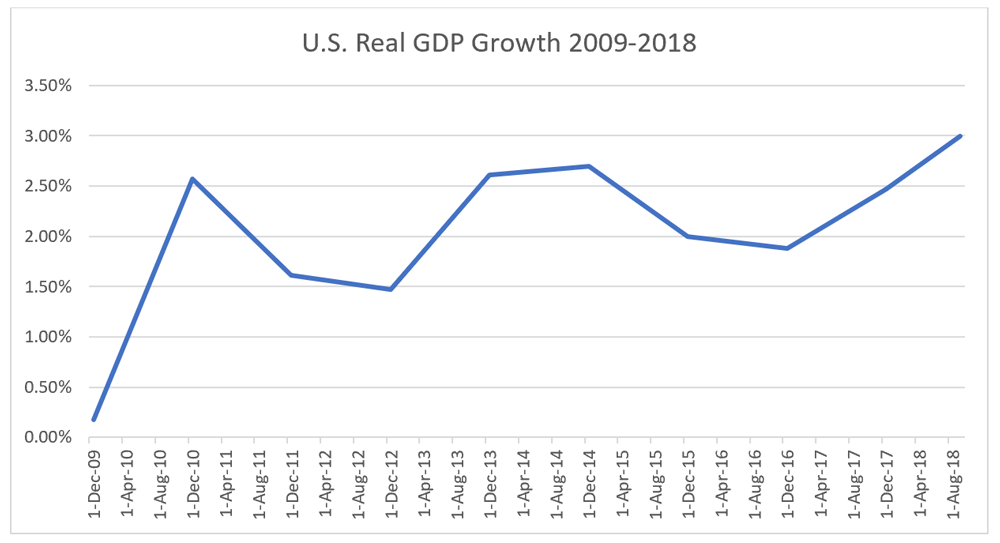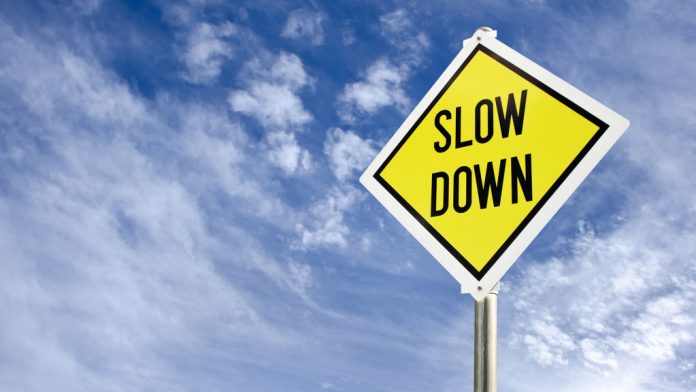According to the Conference Board, a non-profit research association based out of New York City, their leading economic index (or LEI) fell 0.1% in December, capping off a three-month net decline (starting in October) of 0.2%. The index, which is made up of ten different components, is often referenced as an indicator of U.S. economic growth and used to forecast growth rates in the future.
Ataman Ozyildirim, the Conference Board’s director of economic research says, “The US LEI declined slightly in December and the recent moderation in the LEI suggests that the US economic growth rate may slow down this year. While the effects of the government shutdown are not yet reflected here, the LEI suggests that the economy could decelerate toward 2% growth by the end of 2019.”
Due to the ongoing U.S. government shutdown, Ozyildirim and the board had to fudge some numbers as they were not readily available, but are confident in their prediction – something that many analysts are getting whipped up about, pitching hypothetical doomsday scenarios.
And while it’s certainly not great to see economic growth reduced, the fact is that America’s current pace was unsustainable, and a reduction down to 2% might not be the worst thing in the world.
When adjusted for inflation, U.S. real GDP growth was roughly 3% in 2018 – a number we haven’t seen since 2005. During Barack Obama’s post-financial crisis reign, America averaged a paltry 1.88% yearly real GDP growth, even though we were situated in a perfect rapid growth scenario following a huge economic downturn.
I want to emphasize real, here, because most of the time you’ll see numbers thrown around without being adjusted for inflation, and without using the “chained dollars” method, which adjusts real dollar amounts for inflation over time so as to allow a fair comparison of figures from different years.
So, here’s a chart plotting real GDP growth, using chained dollars, from 2009-2018 (2008 is excluded due to the financial crisis and a -2.75% growth rate that would skew the data):

As you can see, a reduction back down to 2% real GDP growth would not be all that out of the ordinary. Now, having traded the markets for decades, I understand that investors will never be satisfied by slowed growth. You see it all the time with earnings reports, where companies still report healthy growth, but because they grew a little slower than the last quarter, share prices end up falling.
It’s the same thing with GDP growth – a reduction is never going to satisfy anyone. And with the market looking massively overbought in what is still a bear market, falling GDP growth statistics could be the catalyst that kicks off a significant dip once the government opens back up and national productivity reports are released.
So, as we progress through the year and uncover more signs of the economy’s health, keep in mind that if a reduction does happen, it’s not the end of the world. The market is going to drop once it becomes clear that continued aggressive growth is out of the picture for 2019, but the United States will still be in a better position (economically at least) than it was in 2011-2013, a span that saw a 43% gain for the S&P 500 despite sluggish growth statistics.








